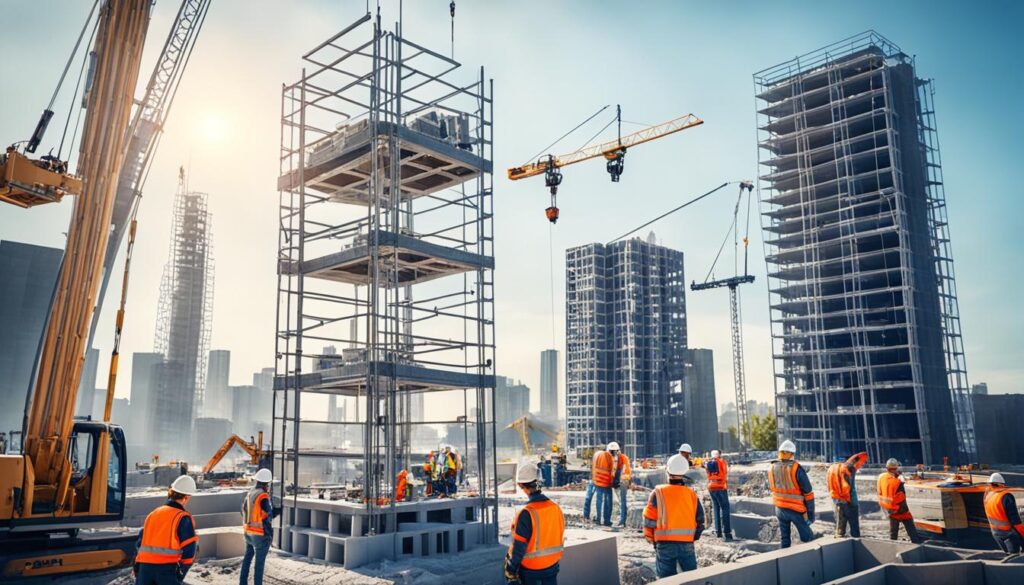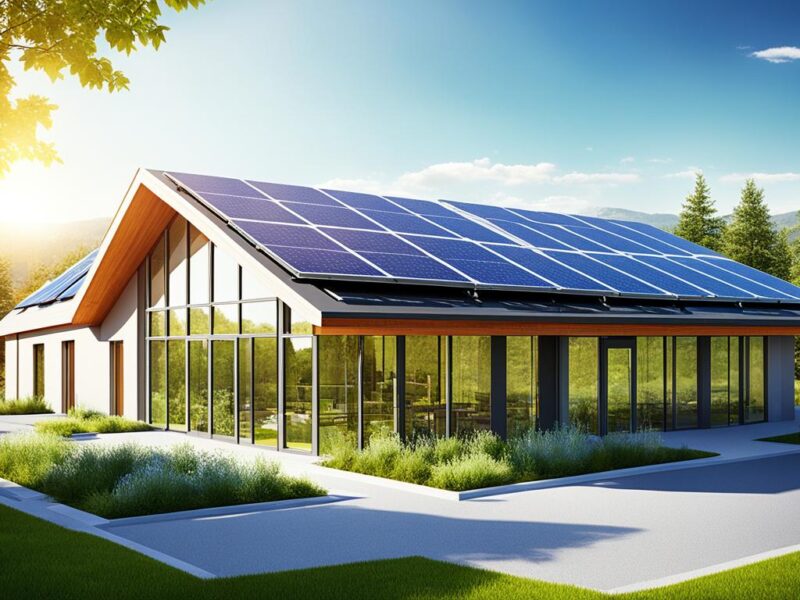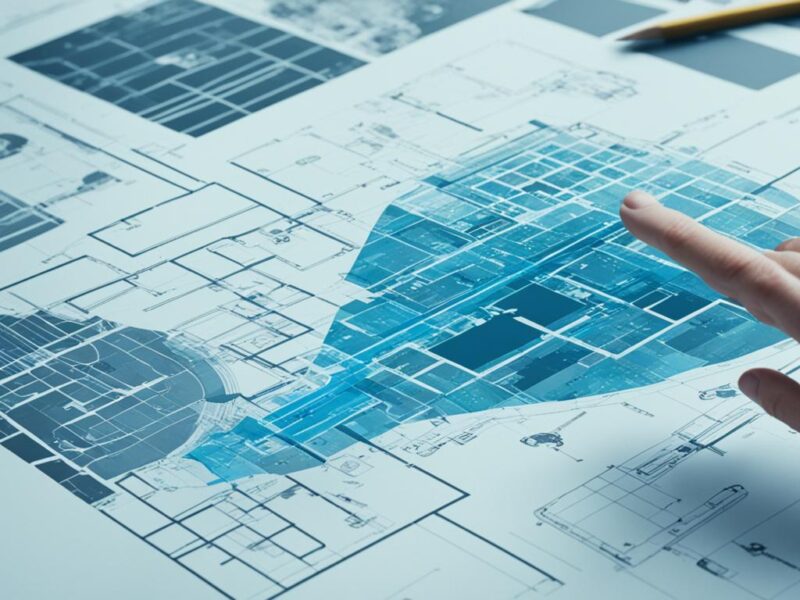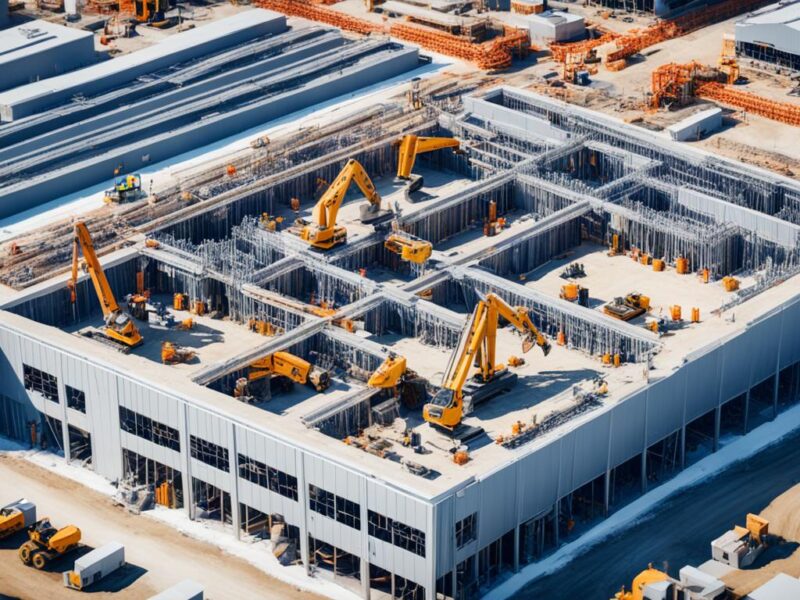
3D Printing in Construction: Innovative solution or overhyped trend?
Did you know the 3D printing construction market might hit $1.5 billion by 2024? This shows how big 3D printing could be for building things.
Thanks to better additive manufacturing, we have cool new ways to build. Construction is seeing big changes. 3D printing brings rapid prototyping and digital making. This opens up fresh chances to change how we make buildings.
In this piece, we look at the history and growth of 3D printing in building. We’ll also talk about its benefits and what it might do in the future. Join us as we delve into how 3D printing is changing construction. It’s an exciting shift in building things.
Key Takeaways:
- 3D printing construction market is projected to reach $1.5 billion by 2024
- Advancements in additive manufacturing technology have opened up new possibilities for the construction industry
- 3D printing offers rapid prototyping, digital fabrication, and exciting opportunities for reshaping construction processes
- Concrete 3D printing is one of the areas experiencing significant growth in the construction industry
- 3D printing in construction offers the potential for increased efficiency, reduced waste, and improved worker safety
A History of 3D Printing in Construction
3D printing technology first appeared in the construction field in the mid-1980s. It started with stereolithography (SLA). Back then, it was mainly for making models quickly and accurately.
The technology got better over time, and so did its use in building things. Designers and builders began using this cool tech to make new kinds of buildings and structures.
3D printing has done amazing things in construction. It has made walls, houses, bridges, and even an office building that fully works.
“The adoption of 3D printing in construction is expected to continue growing as the technology evolves and becomes more accessible.”
The future looks bright for 3D printing in building things. New materials and ways of printing are making it easier and cheaper to build. This means projects can save money and be finished faster.
Using 3D printing helps companies be more efficient and waste less. More and more, building companies are seeing how good this technology can be. It’s getting more popular every day.
The story of 3D printing in building tells us how powerful this tech is. It’s changing how we build things for the better. As it keeps getting better, we’ll see even cooler projects and ideas come to life.
The Growth of 3D Printing in Construction
3D printing is growing fast in the construction world. With new tech, it could change how we build things.
The concrete 3D printing market might hit $56.4 million by 2021. This shows people are starting to use this new way to build. Concrete 3D printing has many plus points over the old ways.
First off, concrete 3D printing makes building faster. It’s automated, so it needs fewer people. This means projects can finish quicker and construction time drops.
Also, 3D printing could cost less than traditional ways. It uses the right amount of materials, so there’s less waste. This not only saves money but is better for the planet.
Yet, 3D printing with concrete has some limits today. But progress is being made. Experts are working to make 3D-printed concrete stronger and more durable.
3D concrete printing lets architects and designers do more. They can create complex shapes and new designs. This could lead to more creative and efficient buildings.
A company named Apis Cor printed a 400-square-foot house in just one day. This shows how fast and precise 3D printing can be.
As this tech gets better, it may play a bigger role in construction. 3D printing offers speed, lower costs, environmental benefits, and new design options. It could be a key way we build in the future.
The Benefits of 3D Printing in Construction
3D printing brings many benefits to construction. It can change how we design and build structures. Here are some key advantages:
1. Increased Efficiency and Reduced Construction Time
3D printing makes construction quicker and more efficient. It uses additive manufacturing to make complex parts automatically. This cuts down on the need for manual work. It saves time and money.
2. Construction Waste Reduction
Old construction methods can waste a lot of materials. But 3D printing is different. It builds structures layer by layer with just what’s needed. This approach reduces waste and is better for the environment.
3. Design Freedom and Innovation
3D printing in construction opens up new design possibilities. It allows for complex shapes and details hard to get with old methods. Architects and designers can now try out bold, new ideas. This moves construction forward.

4. Reduced Human Error and Improved Worker Safety
Mistakes can happen often in construction. But 3D printing reduces the need for hands-on work, cutting down on errors. It makes building more precise. And, it’s safer for workers, removing many dangers.
In short, 3D printing can truly change the construction world. It makes building faster, cuts down on waste, boosts creativity, and keeps workers safe. As technology grows, its impact will only grow. Expect to see more of it in construction.
Conclusion
The power of 3D printing in the construction industry can’t be ignored. It has proven itself in many areas and is now changing construction. Despite issues like high costs and not enough workers, the good things and future promise of 3D printing are more important.
We can look forward to more 3D printing in construction as technology gets better. It can do everything from quick prototypes and unique parts to big structures and green designs. 3D printing opens up lots of chances for new ideas and growth in construction.
The future of building is in mixing old ways with new innovations. By using skilled workers’ knowledge and 3D printing’s benefits, we can work more efficiently, cut down on waste, and have better design options. Bringing 3D printing into construction will change how we build. It will also lead to more teamwork, creativity, and green building.







